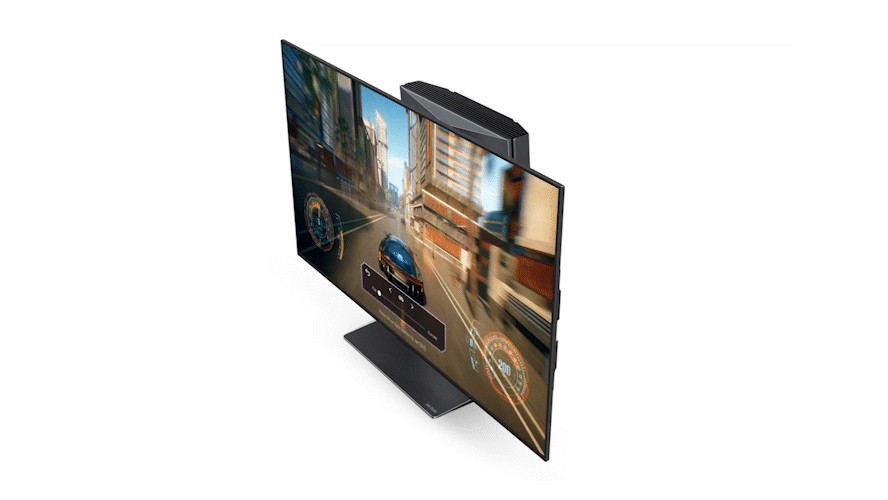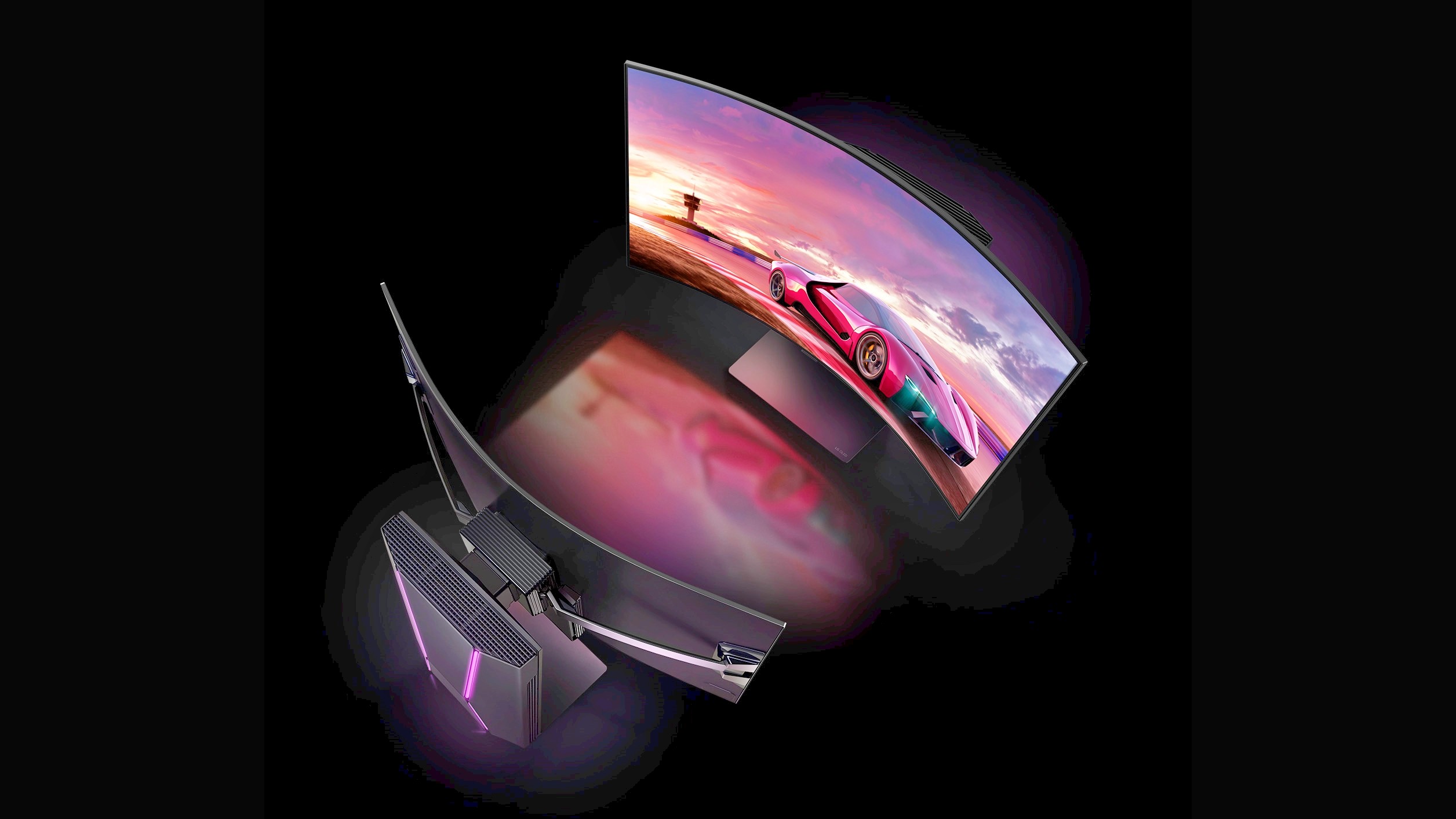The curvy, C2-based LG Flex OLED gaming monitor is so wrong it's right
Do I need the curve? No. Do I want it? Absolutely!

To my mind, the best gaming monitor is an LG C2. There's just no way to beat the perfect blacks and perfect contrast of OLED, and LG's OLEDs support more next-gen gaming features than any other, from 4K 120Hz to VRR, HGiG to Dolby Vision gaming.
Strictly speaking, though, the LG C2 is a TV that can be used as a (great) gaming monitor. If you'd prefer a gaming monitor that can be used as a TV, LG now has a solution for you – the slightly whacky, curvy, flashy Flex.
The LG Flex's USP should be obvious from its name: its 42-inch screen can go from flat to curved at the press of a button, with 20 levels of curve available. The idea is that you can use it in curved mode when you're sitting close to it – when there's genuine value to having every part of the screen equally close to your eyes – and flat when you're kicking back and watching a movie or TV show. That potentially makes it a great option for bedrooms, or home offices that double as dens.
All of the C2's excellent gaming features are carried over to the Flex. On top of those mentioned at the top, that includes four HDMI 2.1 ports rated to the maximum 48gbps, plus built-in support for game streaming services Google Stadia and GeForce Now.

But it also has some extra gaming tricks up its sleeve. There's the curve, of course, and the screen can be raised and lowered, plus tilted forwards and back. There's customisable LED lighting built into the stand (seemingly a must for modern gaming monitors), and LG has usefully doubled audio power from the 20W of the C2 to a far more respectable 40W.
The Flex has a standard headphone socket, too – something that the C2 does not – and LG has even thought to build a game chat-compatible mic into the Flex's chassis. And there are three USB ports, with the monitor able to act as a switching hub for your various computing peripherals.
Finally, while the Flex essentially has the same OLED panel as the C2, it also has an enhanced anti-reflective coating that's said to reduce reflections by 25% – something that's very useful when you're sitting close to a screen and using controllers or a mouse that have lighting built in. It can be used in ultra-widescreen aspect ratios, too, and gaming picture and sound options can be customised to an even more granular degree than they can on the C2.
The latest hi-fi, home cinema and tech news, reviews, buying advice and deals, direct to your inbox.

The Flex is still a perfectly capable TV, though. It runs the same, app-packed webOS22 operating system as LG's other 2022 OLEDs, it has a standard TV tuner, and the same a9 Gen5 processor with all of the same picture processing options. It comes with a motion-sensing Magic Remote, too, albeit one with a dedicated button for adjusting the TV's curve.
So what are the downsides? There's no DisplayPort, which is common for gaming monitors. LG says that's because it doesn't have the bandwidth of HDMI 2.1, and that gamers on consoles and modern gaming PCs are on HDMI rather than DisplayPort anyway, but that could still be a problem for certain PC gamers. Another issue is that the screen can't be detached from the stand because that's where the motors for the curve are. That means you can't wall-mount it, or construct an elaborate multi-monitor arrangement using a third-party stand.
Finally, but most importantly, we don't yet know how much it costs. It's fair to assume, though, that it will cost a fair bit more than the 42-inch C2 OLED TV, which has been on the receiving end of some rather aggressive discounting since it launched earlier in the year. Is the Flex worth the extra money? Almost certainly not. Do I absolutely want it anyway? Oh, yes. Its bling might be unnecessary but it is bling that I want.
MORE:
Check out our list of the best gaming TVs
Here's our LG C2 review
It's not available at 42 inches, but the LG G2 is even better than the C2
Tom Parsons has been writing about TV, AV and hi-fi products (not to mention plenty of other 'gadgets' and even cars) for over 15 years. He began his career as What Hi-Fi?'s Staff Writer and is now the TV and AV Editor. In between, he worked as Reviews Editor and then Deputy Editor at Stuff, and over the years has had his work featured in publications such as T3, The Telegraph and Louder. He's also appeared on BBC News, BBC World Service, BBC Radio 4 and Sky Swipe. In his spare time Tom is a runner and gamer.

